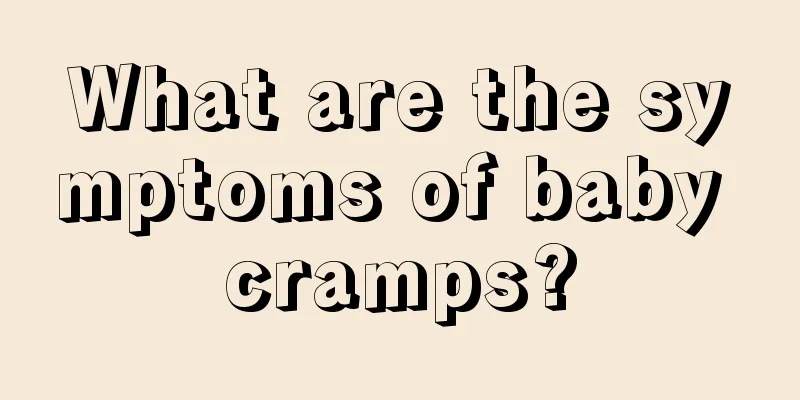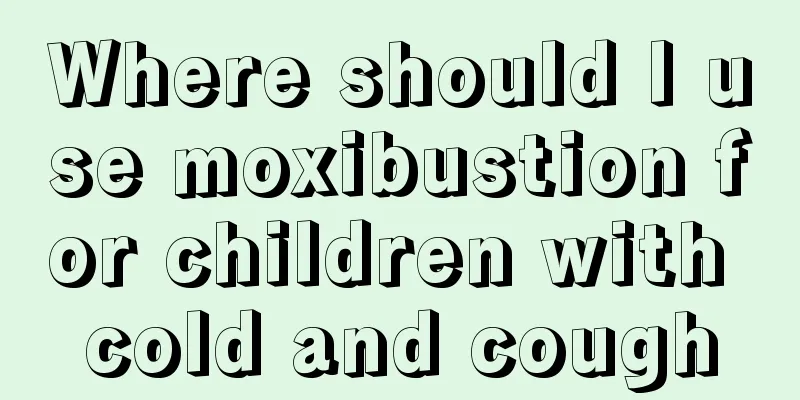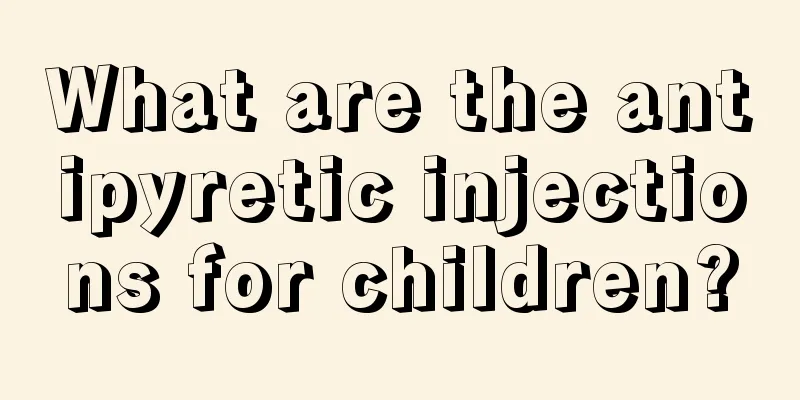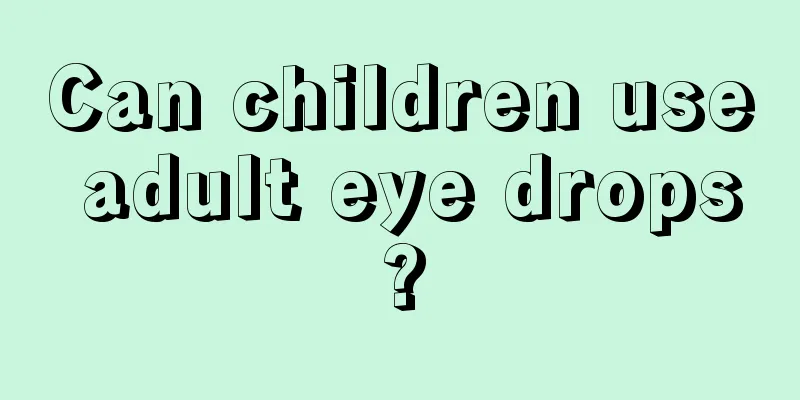What are the symptoms of baby cramps?

|
Babies sometimes have cramps, and parents don’t know how to deal with this. When a child has cramps, the first thing to do is to find the location of the cramp in time, such as whole body muscle cramps, head cramps, foot cramps, etc., because the discomfort in different parts of the body may have different causes. It is recommended that parents seek medical attention in a timely manner to find out the cause of the cramps. Clinical manifestations 1. Bowing spasm There is a sudden, brief whole-body muscle spasm with the trunk and legs bending and the arms thrust forward and outward. 2. Nodding spasm Muscle spasms are limited to the head and neck, with nodding-like attacks and easy bruises on the forehead and face. 3. Lightning spasms The duration is so brief that one can only notice it if one happens to be watching the child during the attack. Atypical seizure forms include asymmetric spasms. The head rotates to one side or one side of the limb twitches, there is an extension spasm, the head tilts back, the eyes roll upward, the legs are stretched out, and the legs are in opisthotonos. If a child starts to have cramps such as nodding and bending when he is a few months old, this may be infantile spasms. In addition to convulsions all over the body, infantile spasms can also cause intellectual disabilities in children. Once the disease is diagnosed, treatment should begin immediately. The earlier treatment begins, the less brain damage the child is likely to suffer. Currently, the main drugs used to treat infantile spasms are nitrazepam and hormones. If the two are used in combination, the effect will be better. During drug treatment, children should be given medication regularly to maintain the necessary effective blood concentration. In order to prevent the recurrence of infantile spasms and the transformation into grand mal epileptic seizures or psychomotor seizures, the drug dosage should not be reduced even after the seizures have completely stopped. Instead, the drug should be continued for 2 to 4 years, and then carefully and gradually reduced until it is stopped under the guidance of a doctor. In addition, parents should pay special attention to the fact that when their children start taking medication, they should go to the hospital for follow-up every 2 to 3 weeks, and then have a follow-up check every 3 to 6 months. At the same time, you should pay close attention to the toxic manifestations of the drugs, and take your children to the hospital regularly to check liver and kidney function and blood routine. Once any abnormalities are found, take further measures in a timely manner. Differential Diagnosis 1. Benign myoclonus of infancy Spasm-like attacks may also occur in clusters, often during eating. It becomes noticeable within weeks to months after birth and usually disappears on its own after 3 months. Psychomotor development was normal before and after the onset of symptoms, and there were no abnormal neurological signs. EEG and neuroimaging were normal. This condition is an involuntary movement in young infants and does not require treatment. 2. Early infantile epileptic encephalopathy Also known as Ohtahara syndrome, the onset age is earlier than infantile spasms, and the onset occurs within a few days to 3 months after birth. The seizures are in the form of single or clustered convulsions, and the EEG shows a burst-suppression pattern. Most of them have severe brain damage or structural abnormalities. It is difficult to treat and the prognosis is poor. Some children develop infantile spasms at 4 to 6 months. Some people also believe that Ohtahara syndrome is a variant of infantile spasms. 3. Benign myoclonic epilepsy of infancy Rare in clinical practice. One-third of children have a family history of epilepsy. The disease begins between 4 months and 2 years old, and the seizure form is generalized myoclonic seizure. There are no other types of seizures in infancy, but generalized tonic-clonic seizures may occur in adolescence. Psychomotor development was normal before and after the onset of the disease. The EEG is normal during the interictal period, and during the ictal period, there are bursts of all-lead slow waves and multiple spike-like slow waves. Valproic acid is effective in controlling seizures. |
<<: What are the symptoms of qi deficiency in children?
>>: What to do if your child has no memory
Recommend
How to measure the temperature correctly when the baby has a fever but is in good spirits
For babies, if the fever does not exceed 39 degre...
What soup can children drink to grow taller
Paying attention to your daily diet can help you ...
Hard lumps on children's feet
Adults will develop many lumps on the soles of th...
Reasons why baby's lips are not red
Every parent wants their child to have rosy lips....
Treatment of torticollis in children
Torticollis in children takes a longer time to be...
How to make corn porridge for children?
Many little babies like delicious corn porridge. ...
How to treat bronchitis with phlegm in children
We know that acute bronchitis is actually a very ...
Why does a child blink suddenly?
The movements of a child who has not yet learned ...
Lymphatic inflammation symptoms in children
There are many symptoms and locations of lymphade...
Can I get a vaccination for diaper rash?
Babies' skin is relatively delicate, and they...
What should I do if my baby's forehead is red from a fall?
If your baby's forehead is red from a fall, y...
What to do if a little boy has a long foreskin
Now more and more parents are beginning to pay at...
Normal weight for 12-year-olds
Maybe we are not very familiar with the growth an...
How long is the appropriate nap time for children?
After a child is born, he or she sleeps for a ver...
Children often have high fever
Children are very easy to get sick when they are ...









